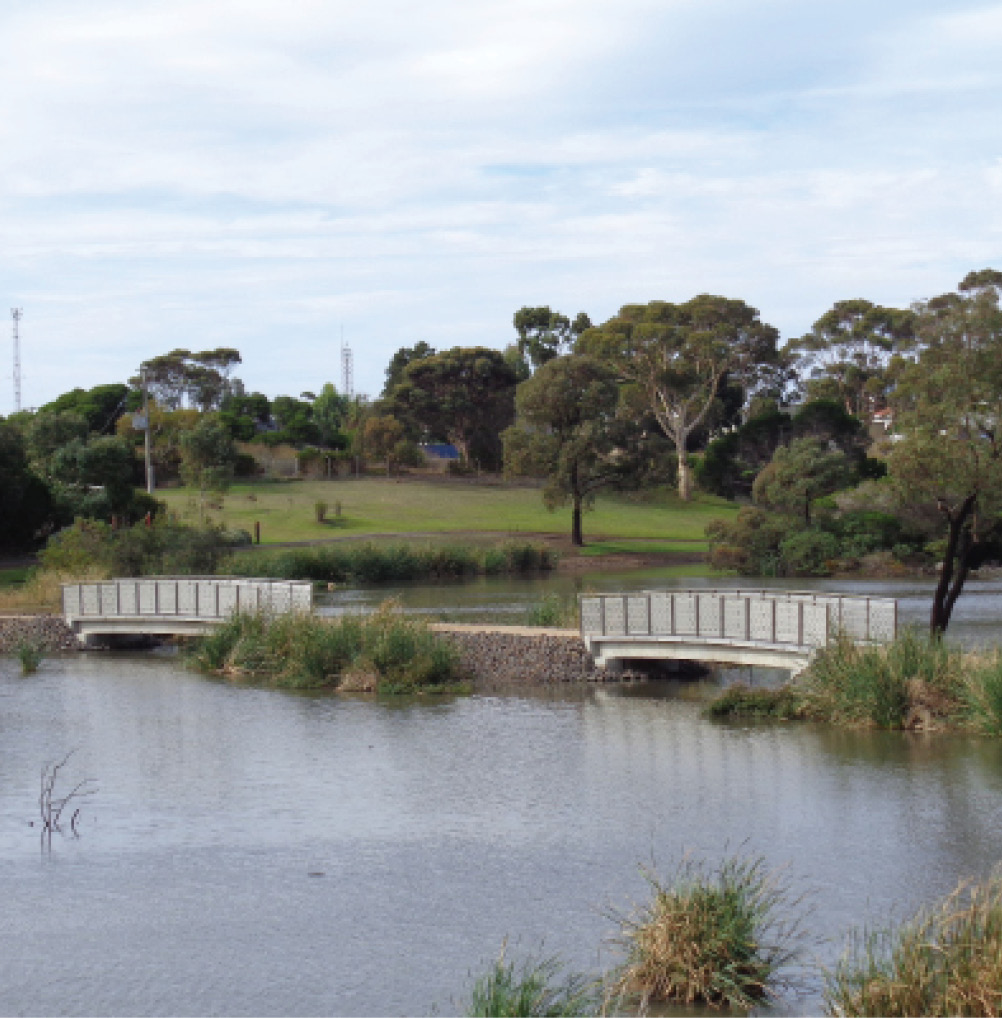Geopolymer concrete and fiber-reinforced polymer rebar can be the perfect match for sustainability in structural applications.
Steel and concrete have a love-hate relationship. Steel brings tensile strength to concrete, making it stronger for structural applications. Alas, concrete lets water seep into the relationship and corrode the hope for a lasting union. To fix this marriage, Dr. Ruth (Westheimer) has been replaced by Dr. Mahbube Subhani, Ph.D., of Deakin University in Victoria, Australia.
Subhani’s team is focused on sustainability of construction materials, which by necessity must show direct long-term economic benefits. Alternative materials become more economical when you move the needle from cradle to gate (materials to construction) to cradle to grave (full structure life cycle). Let’s take a look at their work.

SOLVING THE CORROSION ISSUE
When properly manufactured and placed, ready mix concrete can last for centuries. However, there are countless examples of bridges and other load-bearing, cast-in-place concrete infrastructure requiring significant maintenance after much shorter time spans. This is often due to corroding steel rebar, especially in saltwater or freeze-thaw environments.
The difficult question is how to economically produce load-bearing structures that last longer, let alone reduce the carbon footprint. Subhani’s team, in concert with the City of Greater Geelong Council in Victoria and Australian Engineering (Austeng) Solutions Pty. Ltd., charted a promising approach. They replaced portland cement-based concrete with geopolymer concrete and then replaced steel rebar with fiber-reinforced polymer (FRP) rebar.

Geopolymer concrete is based on an aluminosilicate—i.e., a natural pozzolanic or industrial byproduct like fly ash or ground granulated blast-furnace slag (GGBS)—mixed with an alkaline reagent, such as sodium or potassium soluble silicates, and water. The resultant concrete has high durability, and if we disregard the carbon footprint of the original creation of fly ash or GGBS, it can reduce CO2 emissions by as much as 80 percent.
FRP has a tensile strength that is greater than steel yet weighs much less. Non-conductive, not susceptible to chloride and transparent to magnetic fields, it is used for extreme environments where normal reinforced concrete would be more susceptible to corrosion and/or magnetic fields. Next time you have an MRI, be thankful that the rebar in the walls, floor and ceiling is FRP!
The Greater Geelong Council’s immediate need was to replace several footbridges. Ever mindful of cost and carbon footprint, the council worked with Subhani and Austeng for a better path forward. Subhani’s team and the engineering firm designed and deployed two footbridges with the new materials. Carbon fiber-reinforced polymer (CFRP) was used for tensile rebar and glass fiber reinforced polymer (GFRP) was used for compression.
After more than two years in service, the fiber-reinforced geopolymer concrete pedestrian bridges are showing no signs of degradation. Their compressive and tensile strength and resistance to fatigue have so far proven to be excellent.

COST BARRIERS
The harsh reality of staying in business forces material producers to participate in competitive bidding. Generally, successful bids require a price optimized for “delivery” and not life cycle, and this clearly favors traditional portland cement concrete and steel rebar. FRP and geopolymer concrete are rare and subsequently expensive.
The longer-term considerations are being investigated by Subhani’s team. They are focusing on the life-cycle costs of a five-story commercial building in Australia’s capital city, Canberra, that was constructed using geopolymer concrete reinforced with GFRP rebar. Reasonable assumptions are being made for the cost of materials as they become more prevalent. At present, the research indicates roughly a 10 percent reduction in total life-cycle costs over 50 years.
Dr. Ruth is now 94 years old, and this columnist suspects she often concluded that to make the bond of marriage work in the long term, you either need to change the people or change the people. Subhani’s team is changing the materials used in reinforced concrete to optimize for a long-term relationship with encouraging results. The challenge is the short-term cost of the materials due to their small-scale production.
Geopolymer concrete and FRP just need a little more matchmaking from governmental agencies like the City of Greater Geelong Council to cultivate the market and tame the economics.

Craig Yeack has held leadership positions with both construction materials producers and software providers. He is co-founder of BCMI Corp. (the Bulk Construction Materials Initiative), which is dedicated to reinventing the construction materials business with modern mobile and cloud-based tools. His Tech Talk column—named best column by the Construction Media Alliance in 2018—focuses on concise, actionable ideas to improve financial performance for ready-mix producers. He can be reached at [email protected].